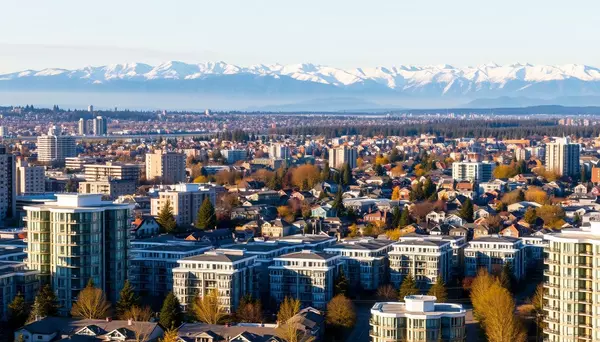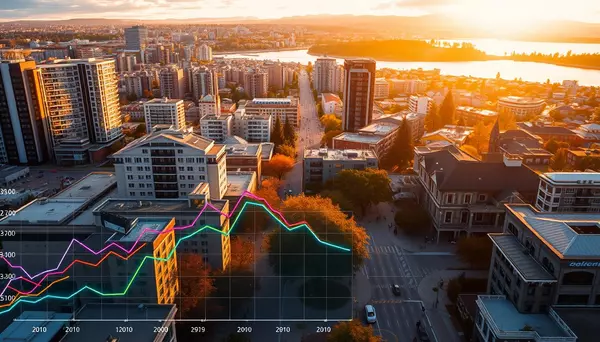How Property Prices in Victoria Relate to Nearby Regions' Real Estate Markets
 Understanding property prices in Victoria can be challenging, especially when considering nearby regions. This article delves into how property prices in Victoria relate to its neighboring areas, highlighting key trends, influencing factors, and the impact of regional markets. Home buyers and investors will benefit from insights into the current market dynamics, addressing common concerns about making informed decisions. By the end, readers will gain a clearer perspective on property valuations and how they can navigate the complexities of the Victoria real estate market.
Understanding property prices in Victoria can be challenging, especially when considering nearby regions. This article delves into how property prices in Victoria relate to its neighboring areas, highlighting key trends, influencing factors, and the impact of regional markets. Home buyers and investors will benefit from insights into the current market dynamics, addressing common concerns about making informed decisions. By the end, readers will gain a clearer perspective on property valuations and how they can navigate the complexities of the Victoria real estate market.
Understanding Property Prices in Victoria and Surrounding Regions
The real estate landscape in Victoria often acts as a benchmark among nearby regions. The median home prices in Victoria show a steady increase, influenced by factors such as population growth, home evaluation, and immigration patterns. This growth trends favorably when compared to markets like Hobart and Adelaide, where fluctuations can be more pronounced.
Investors often look to Victoria as a stable market, recognizing its attractiveness in relation to the Great Ocean Road. The region's appeal, including lifestyle and economic opportunities, enhances the demand for properties, creating a more competitive environment. This dynamic influences the median home prices not only in Victoria but also in adjacent areas, setting a precedent for pricing structures.
Overall, property prices in Victoria serve as a reflection of broader trends affecting nearby markets. As demand fluctuates due to immigration and lifestyle choices, areas like Adelaide and Hobart may experience different pricing pressures. Understanding these relationships helps buyers and investors make informed decisions within the real estate market.
Analyzing Real Estate Trends in Victoria Compared to Nearby Areas
The average property price in Victoria remains comparatively higher than that in Brisbane and several nearby regions. This trend can be attributed to the robust infrastructure and amenities available in Victoria, which attract both home buyers and investors. As urban developments continue, the demand for housing in this area reinforces its position as a desirable market.
The wage levels in Victoria play a significant role in sustaining property prices. Higher average incomes contribute to the ability of residents to afford homes, thereby maintaining a steady demand. In contrast, regions like Brisbane exhibit different economic conditions, which directly impact their real estate markets and average pricing structures.
Market dynamics indicate that while Victoria shows consistent price increases, nearby areas often experience varying trends based on local economic conditions and housing supply. Investors and potential homebuyers must consider these factors when analyzing property values. Understanding how Victoria's prices relate to adjacent markets provides critical insights for making informed decisions in real estate investments.
Key Factors Influencing Property Prices in Victoria and Neighboring Regions
The income levels of consumers in Victoria significantly impact property prices. Higher average incomes allow residents to afford homes, driving demand and maintaining steady price growth in comparison to other regions, including New South Wales.
Another factor is the potential economic recession, which can influence buyer confidence and spending habits. During periods of economic uncertainty, consumer behavior shifts, potentially affecting the real estate market dynamics in both Victoria and neighboring regions.
Victoria's strong infrastructure and amenities contribute to its appeal, attracting potential buyers from areas like New South Wales. This demand, influenced by consumer preferences, sets the stage for a competitive housing market, maintaining Victoria's position in relation to surrounding regions.
How Nearby Regions Impact Housing Prices in Victoria
The real estate dynamics in nearby regions such as Western Australia have a significant influence on housing prices in Victoria. Changes in market value and trends in those areas can prompt buyers to shift their focus toward Victoria, increasing demand, particularly for townhouses and other specific property types.
The Multiple Listing Service (MLS) provides data that highlights how property prices fluctuate in surrounding regions. This information helps Victoria's real estate professionals gauge market changes, allowing for better predictions about shifts in buyer interest and potential impacts on market values.
Additionally, economic factors and population movements in adjacent areas can lead to fluctuations in Victoria's housing market. For example, if regions nearby experience downturns, homebuyers may see Victoria as a stable option, further driving demand and affecting housing prices as reported through various Real Estate Syndication Services (RSS).
The Correlation Between Property Prices in Victoria and Adjacent Real Estate Markets
The relationship between property prices in Victoria and adjacent markets like Geelong illustrates the broader dynamics of real estate in the region. As interest rates fluctuate, the impact is felt across both areas, affecting buyer interest and overall market stability.
In December, shifts in interest can compel buyers to reevaluate their options, leading many to consider properties in Victoria due to its relative resilience compared to surrounding markets. This trend can create a ripple effect, where increased demand in Victoria may also drive up property prices in Geelong as buyers look for alternatives.
The correlation between these markets emphasizes the significance of economic factors, such as interest rates, on property values. Understanding how fluctuations in buyer interest influence both Victoria and nearby regions helps investors and homebuyers make informed decisions in the competitive real estate environment.
Future Projections for Victoria’s Property Market Relative to Nearby Regions
The future of property prices in Victoria is expected to remain strong, particularly as employment opportunities continue to rise in the post-pandemic environment. With data from CoreLogic indicating an upward trend, buyers may focus on areas with stable job markets, including Ballarat, driving demand and influencing overall pricing structures.
As migration patterns shift, many residents from Queensland are likely to seek property opportunities in Victoria, further impacting local market dynamics. This influx can create heightened competition for housing, leading to potential increases in median prices, especially in desirable suburbs.
The relationship between Victoria’s real estate market and neighboring regions will evolve as economic conditions fluctuate. Monitoring CoreLogic reports on regional trends will provide insights into how property values may adapt in response to neighboring market influences, ensuring informed decision-making for buyers and investors alike.
Conclusion
Understanding how property prices in Victoria relate to nearby regions is vital for making informed real estate decisions. The interplay of economic conditions, demographic shifts, and market dynamics influences both local and regional pricing structures. Buyers and investors can benefit from recognizing these relationships, as they inform strategies to navigate the competitive landscape. Staying attuned to market trends fosters proactive decision-making, ultimately enhancing potential investment outcomes.
Categories
Recent Posts











